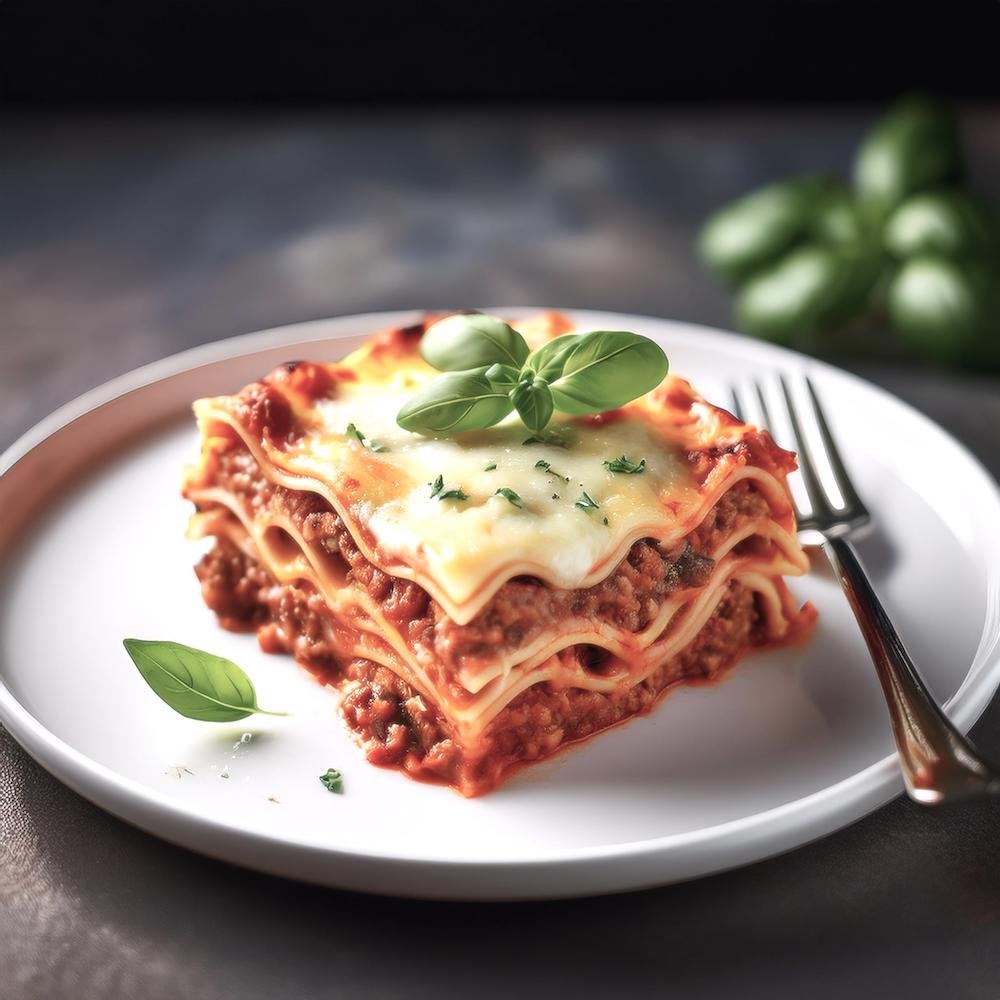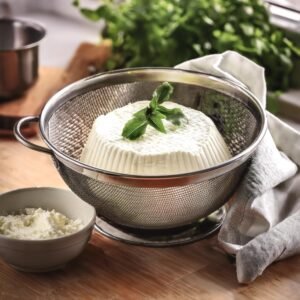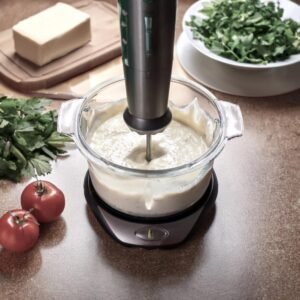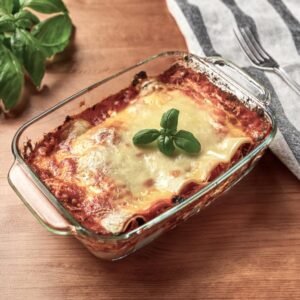Lasagna is a beloved comfort food known for its rich layers of pasta, cheese, sauce, and meat. While most people focus on the flavorful ingredients, one element often raises a common question: Why do you put eggs in lasagna? What role do they play in this classic dish?
Eggs are a crucial ingredient that enhances the structure, texture, and consistency of lasagna. Acting as a binding agent, eggs help hold the layers together, preventing the dish from falling apart when served. Additionally, they add creaminess to the cheese mixture, enriching the overall flavor. Understanding why do you put eggs in lasagna? can make a significant difference in creating a perfectly cohesive and satisfying dish.
Whether you’re blending eggs into ricotta cheese or looking for egg-free alternatives, knowing their purpose allows you to adapt recipes confidently. In this article, we’ll explore why do you put eggs in lasagna, how to use them effectively, and the best substitutes for those with dietary restrictions. Let’s uncover the science and artistry behind this comforting favorite!
The Role of Eggs in Lasagna
Eggs in lasagna may seem like a small addition, but they have a significant impact on the final dish. Here’s a closer look at their role:
Why Do You Put Eggs in Lasagna to Bind Ingredients?
- Why It’s Important:
- Eggs act as a natural binding agent, holding the cheese and other layers together.
- This prevents the lasagna from falling apart when sliced and served.
- How It Works:
- When eggs are mixed into ricotta or cottage cheese, the protein in the eggs helps create a firm, cohesive texture during baking.
Pro Tip: Add 1–2 eggs to the ricotta mixture for every 15 ounces of cheese to achieve the perfect consistency.
Adding Creaminess and Structure
- Enhancing Texture:
- Eggs create a creamy, custard-like texture in the cheese layer, making each bite smooth and rich.
- Supporting Layers:
- The egg mixture helps the cheese layer stay intact, adding structure to the lasagna’s multiple layers.
Pro Tip: Be sure to whisk the eggs thoroughly before mixing them into the cheese to ensure even distribution.
Boosting Flavor and Moisture
- Flavor Balance:
- Eggs have a subtle flavor that enhances the richness of the cheese and complements the savory sauce.
- Moisture Retention:
- They help retain moisture in the cheese layer, preventing it from becoming too dry during baking.
Pro Tip: Combine the egg-cheese mixture with herbs like parsley, basil, or garlic powder for added flavor.
How to Use Eggs in Lasagna Recipes
Why Do You Put Eggs in Lasagna with Ricotta Cheese?
Incorporating eggs into your lasagna is a simple process, but knowing the right techniques can elevate your dish to the next level. Here’s how to use eggs effectively in lasagna recipes.
Mixing Eggs with Ricotta or Cottage Cheese
- Why Mix with Cheese:
- The combination of eggs and cheese creates a smooth, cohesive mixture that spreads easily and stays firm during baking.
- It ensures the cheese layer doesn’t separate or become too watery.
- How to Mix:
- In a medium bowl, combine the ricotta or cottage cheese with the eggs.
- For every 15 ounces of cheese, use 1–2 large eggs. Adjust based on your desired firmness.
- Enhance with Flavor:
- Add a pinch of salt, pepper, and dried or fresh parsley to the mixture. You can also mix in grated Parmesan for extra richness.
Pro Tip: Let the cheese and egg mixture sit for 10 minutes after mixing to allow the flavors to meld.
Quantity Recommendations
Getting the ratio right is crucial for the perfect lasagna. Here’s a guide:
- For a Small Lasagna (8×8 Pan):
- Use 1 egg for about 15 ounces of ricotta cheese.
- For a Large Lasagna (9×13 Pan):
- Use 2 eggs for 30 ounces of ricotta cheese.
- For Extra Firmness:
- Add an additional egg to the mixture if you prefer a denser texture.
Pro Tip: Avoid adding too many eggs, as this can make the cheese layer overly firm and compromise the creamy texture.
Substitutes for Eggs
If you’re cooking for someone with an egg allergy or following a vegan diet, there are plenty of alternatives:
- Unsweetened Yogurt or Greek Yogurt:
- Use ¼ cup of yogurt per egg. It adds creaminess and helps bind the cheese layer.
- Mashed Potatoes or Sweet Potatoes:
- Use ¼ cup of mashed potatoes as a substitute for one egg. This works well for binding and adds a unique flavor.
- Silken Tofu:
- Blend ¼ cup of silken tofu until smooth and use it as a 1:1 egg replacement.
- Flaxseed Mixture:
- Combine 1 tablespoon of ground flaxseed with 3 tablespoons of water, let it sit for 5 minutes, and use it in place of one egg.
Pro Tip: When using substitutes, adjust the moisture level of your cheese mixture to maintain the desired consistency.
Benefits of Using Eggs in Lasagna
Why Do You Put Eggs in Lasagna for Texture and Flavor?
Eggs enhance the creaminess and depth of flavor in lasagna while maintaining the structural integrity of the layers. They also help evenly distribute seasonings like parsley or garlic.
Prevents Layers from Sliding
- Binding Agent:
- Eggs help keep the layers of your lasagna intact, especially the cheese layer, preventing it from oozing out when you slice the dish.
- Stable Structure:
- The egg mixture firms up as it bakes, giving the lasagna a stable structure that holds up well when served.
Pro Tip: Always spread the egg-cheese mixture evenly to ensure consistent results across the entire dish.
Improves Texture
- Creamy Consistency:
- Mixing eggs with ricotta or cottage cheese creates a smooth, creamy texture that complements the tender pasta and rich sauce.
- Avoids Graininess:
- Without eggs, the cheese mixture can sometimes separate or feel grainy after baking. The eggs help achieve a velvety, cohesive texture.
Pro Tip: For a richer texture, mix a bit of heavy cream or grated Parmesan into the egg-cheese mixture.
Enhances Flavor
- Balanced Richness:
- Eggs bring a subtle richness that enhances the overall flavor profile of the lasagna.
- They work harmoniously with the cheeses and sauces to create a well-rounded taste.
- Supports Seasoning:
- The eggs help evenly distribute added seasonings like parsley, garlic, and black pepper throughout the cheese layer.
Pro Tip: Add a pinch of nutmeg to the egg mixture for a subtle yet flavorful twist.
Adds Moisture
- Prevents Dryness:
- The moisture in eggs ensures the cheese layer remains soft and creamy during baking, preventing the lasagna from becoming too dry.
- Helps with Reheating:
- Lasagna made with eggs retains moisture better, making leftovers just as delicious when reheated.
Pro Tip: Cover the lasagna with foil while reheating to preserve its moisture and texture.
When to Skip Eggs in Lasagna
While eggs are a key ingredient in traditional lasagna recipes, there are times when they may not be the best choice. Whether due to dietary restrictions, allergies, or personal preference, here’s how to adapt your lasagna recipe when skipping eggs.
Dietary Restrictions
- Egg Allergies:
- For individuals with egg allergies, avoiding eggs is a must. Use substitutes like yogurt, tofu, or flaxseed mixtures for a similar binding effect.
- Vegan Diets:
- Vegan-friendly lasagna recipes can replace eggs with plant-based alternatives. Silken tofu and cashew cream are excellent options to create a creamy, cohesive layer.
Pro Tip: Always double-check your substitutes to ensure they align with the specific dietary needs of your guests.
Preference for a Lighter Lasagna
- Without Eggs:
- Some people prefer a lighter, looser texture in their lasagna and opt to skip eggs entirely. This results in a softer cheese layer that spreads more easily but may lack firmness.
- Adjust the Layers:
- Compensate for the lack of eggs by reducing the moisture content in the ricotta or using a thicker sauce.
Pro Tip: Add a sprinkle of grated mozzarella or Parmesan to the cheese layer to help it set without eggs.
Alternative Binding Methods
For those with dietary restrictions or personal preferences, understanding substitutes is key.
Why Do You Skip Eggs in Lasagna and Use Substitutes?
Substitutes like yogurt, tofu, or flaxseed mixtures can mimic the binding properties of eggs while catering to specific dietary needs.
- Unsweetened Yogurt:
- Adds creaminess and moisture while keeping the layers intact. Use ¼ cup per egg.
- Mashed Potatoes:
- Provides a starchy, binding effect and a unique flavor twist. Use ¼ cup of mashed potatoes in place of one egg.
- Cheese Blends:
- Using a combination of grated cheeses like mozzarella, Parmesan, and Pecorino Romano can create a firmer texture without needing eggs.
- Flour or Cornstarch:
- Add a teaspoon of flour or cornstarch to the ricotta mixture to mimic the thickening effect of eggs.
Pro Tip: Experiment with these alternatives to find the right balance for your recipe, as each substitute offers a slightly different texture and flavor.
Tips for the Perfect Lasagna with Eggs
Incorporating eggs into your lasagna recipe doesn’t have to be intimidating. By following these expert tips, you can achieve a perfectly layered, flavorful, and visually appealing dish every time.
Use the Right Cheese-to-Egg Ratio
- Balance is Key:
- Too many eggs can make the cheese layer overly firm, while too few may result in a runny texture.
- For every 15 ounces of ricotta or cottage cheese, use 1–2 large eggs to achieve the perfect consistency.
- Enhance the Flavor:
- Add complementary ingredients like grated Parmesan, minced garlic, or chopped parsley to the egg-cheese mixture for extra depth.
Pro Tip: Whisk the eggs thoroughly before adding them to the cheese to ensure even distribution.
Master the Layering Technique
- Start with Sauce:
- Begin with a thin layer of sauce at the bottom of your baking dish to prevent sticking.
- Add the first layer of noodles on top of the sauce.
- Cheese and Egg Mixture:
- Spread an even layer of the egg-cheese mixture over the noodles.
- Repeat Layers:
- Alternate layers of noodles, sauce, meat (if using), and the egg-cheese mixture until the dish is filled.
- Top It Off:
- Finish with a generous layer of mozzarella and Parmesan for a golden, bubbly crust.
Pro Tip: Avoid overfilling the dish to prevent spillage during baking.
Bake to Perfection
- Cover First, Then Uncover:
- Cover the lasagna with foil for the first 20–30 minutes of baking to retain moisture. Remove the foil for the last 15 minutes to allow the top to brown.
- Preheat the Oven:
- Bake at 375°F (190°C) for the best balance of cooking time and temperature.
- Use a Meat Thermometer:
- If using meat, check that the internal temperature of the lasagna reaches 165°F (74°C) for food safety.
Pro Tip: Lightly oil the underside of the foil to prevent it from sticking to the cheese.
Let It Rest
- Why It’s Important:
- Allowing the lasagna to rest for 10–15 minutes after baking helps the layers set, making it easier to slice and serve.
- Cover While Resting:
- Tent the dish with foil to keep it warm without trapping excess steam.
Pro Tip: Use a sharp knife to cut clean slices for a polished presentation.
FAQs :
Are Eggs Necessary in Lasagna?
Not Always, But Recommended: Eggs are not strictly necessary in lasagna, but they are commonly used to bind the cheese mixture and create a cohesive, creamy layer.
If you prefer a softer, looser texture or have dietary restrictions, you can skip eggs and use alternatives like Greek yogurt, silken tofu, or a starchy thickener.
Pro Tip: If skipping eggs, adjust the moisture level in your cheese mixture to prevent the lasagna from being too runny.
Why Do Italians Put Eggs in Lasagna?
Tradition and Structure: In traditional Italian lasagna recipes, eggs are used to bind the ricotta or béchamel layer, ensuring the dish holds its shape when sliced.
The eggs also add creaminess and balance to the richness of the cheese and meat sauces.
Pro Tip: In some regions of Italy, eggs are also added to homemade pasta dough for a richer flavor.
How Do I Stop My Lasagna from Being Runny?
Use Eggs in the Cheese Mixture: Eggs help stabilize the ricotta or cottage cheese, reducing excess liquid.
Drain Ingredients Properly: Ensure ricotta, cottage cheese, or vegetables like spinach are well-drained before layering.
If using jarred marinara sauce, check that it’s thick and not overly watery.
Bake Covered First: Cover the lasagna with foil for the first half of baking to allow the layers to cook evenly without excess evaporation.
Let It Rest: Rest the lasagna for at least 10–15 minutes after baking to let the layers set and absorb any remaining moisture.
Pro Tip: If your lasagna still turns out runny, reduce the liquid content in your sauce the next time you make it.
Why Add Egg to Cottage Cheese Lasagna Without Ricotta?
Binding and Texture: Cottage cheese tends to have a looser texture than ricotta, and adding eggs helps thicken and bind it during baking.
The result is a firmer, creamier layer that stays intact when sliced.
Flavor Boost: Eggs enhance the richness and flavor of the cottage cheese mixture, making it taste more like traditional ricotta lasagna.
Pro Tip: Blend the cottage cheese slightly before mixing in the eggs for a smoother, ricotta-like texture.
Suggested Internal Links :
- What Meat Goes Best with Tarragon?
Discover how to pair lasagna with tarragon-seasoned meats for a gourmet touch. - What Is in Publix Tarragon Chicken Salad?
Explore tarragon’s use in a creamy chicken salad that complements lasagna dishes. - What Does Tarragon Taste Like in Chicken?
Learn about tarragon’s flavor profile and its potential to enhance lasagna recipes. - What Are the Main Ingredients of Macaroni Salad?
Pair lasagna with a creamy macaroni salad for a well-rounded meal. - What Are the Five Mistakes to Avoid in Pasta Salad?
Find tips to perfect pasta dishes that can complement lasagna as a side.
Conclusion
Eggs play a vital role in lasagna recipes by binding ingredients, enhancing texture, and adding richness to the dish. While not strictly necessary, they help create a cohesive, creamy layer that elevates the overall structure and flavor of the lasagna. Whether you’re using ricotta, cottage cheese, or a substitute, understanding how eggs contribute to the dish can help you achieve a perfect lasagna every time.
For those who prefer to skip eggs due to dietary restrictions or preferences, there are plenty of alternatives like yogurt, silken tofu, or cheese blends that can still produce delicious results.
With these insights and tips, you’re ready to customize your lasagna to suit any occasion or preference. So, grab your ingredients, layer with care, and enjoy the magic of a homemade lasagna that’s flavorful, hearty, and perfectly balanced. Happy cooking!
Craving more tasty recipes? Make sure to follow us on Facebook , Instagram, Pinterest, and Twitter for daily updates and kitchen inspiration!




